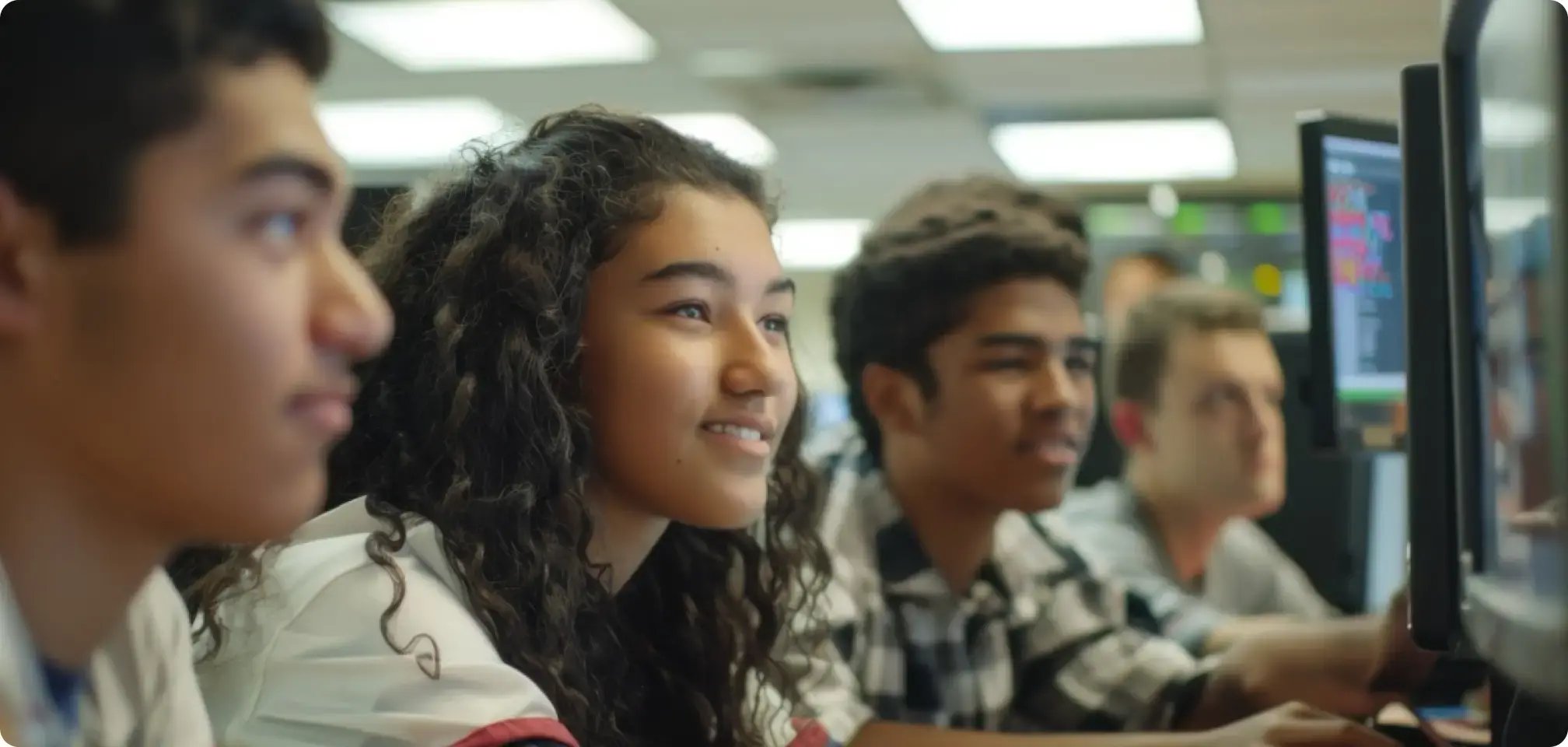
Both can help you graduate and plan for your future, but they have different ways of doing things.
In this blog, we’ll break it down in a way that makes sense. By the end, you’ll have a better idea of which type of school might work best for you. Let’s get into it!
What Are Public Schools?
Public schools are schools that are free for all students to attend. They are paid for by tax dollars from the local community and the state government. This money helps pay for things like teachers, textbooks, and classroom supplies.
Public schools are managed by school districts, which are groups of schools in a certain area. A school board makes important decisions for the district, like setting rules and making sure the schools follow state laws.
Anyone who lives in the school district can attend a public school, so they’re open to all students in the area, no matter what.
What Are Charter Schools?
Charter schools are a type of public school, but they have some special rules that make them different from regular public schools. Like public schools, they are free for students to attend, and they get money from the state and local government. However, charter schools can also get extra funding from private sources like donations.
One big difference is that charter schools have more freedom. They can create their own curriculum (what they teach), decide on school hours, and even choose different teaching methods. This is called "autonomy," and it allows charter schools to try new and unique ways of educating students.
Career Prep High School is a great charter school that helps students get their diploma in a way that fits your needs. Whether you’re a busy student who can’t do school full-time, or if you want to graduate faster than normal, this is the charter school for you. Call us at (888) 995-7143 to learn more.
Charter schools also sign a special agreement, called a "charter," with the local government or state. This agreement outlines their goals and how they will meet the needs of students. If they don’t meet these goals, the charter can be taken away, and the school might close.
Key Differences Between Public and Charter Schools
1. Governance
Public Schools: Public schools are run by school districts and overseen by elected school boards. They must follow rules and guidelines set by the state to make sure all students in the area get the same education. These schools have typical standards so the learning experience is similar for everyone.
Charter Schools: Charter schools have more freedom than public schools. They still follow state rules but they create their own curriculum. They can also set their own school hours and try different teaching methods. They still need to meet goals in their charter, which is an agreement with the state or local government.
2. Curriculum and Teaching Methods
Public Schools: In public schools, the curriculum is set by the state. This means that all public schools in a state teach similar subjects and follow state guidelines. The approach to learning focuses on subjects like math, science, English, and social studies. The goal is to provide a well-rounded education that prepares students for their futures.
Charter Schools: Charter schools have more freedom when it comes to what and how they teach. They can create programs that focus on specific areas like the arts, or even unique teaching methods. This allows charter schools to offer a more customized learning experience that might be a better fit for some students.
At Career Prep, we have different career programs to help our students get started on the right foot. We’re the best at helping students land great jobs right after graduation. Contact us if you're looking for ways to be ready for life after high school while getting your diploma.

3. Enrollment and Student Population
Public Schools: Public schools are open to all students who live within a specific area or district. This means that if you live in a certain neighborhood, you’ll likely attend the public school assigned to that area. Since public schools must serve every student in the district, they usually have more students enrolled and are bigger in size.
Charter Schools: Charter schools are a bit different. They often have a limited number of spots available, and if too many students apply, they might use a lottery system to decide who gets in. This means some students may not get a spot, even if they really want to attend. Because of this, charter schools can be more selective about who they enroll, but the lottery system gives everyone a fair chance.
4. Funding and Resources
Public Schools: Public schools get most of their money from local and state taxes. This means the money comes from the community and the state government. They also receive some extra funding from the federal government. Public schools generally have a stable budget to cover things because they're funded this way. It funds things like teachers' salaries, school supplies, and extracurricular activities. This can help them provide a lot of resources for students.
Charter Schools: Charter schools also receive funding, but they sometimes get less money than regular public schools. While they do get money from taxes, charter schools can also raise money through private donations or grants. This extra money can help them with special programs or activities. Unfortunately, it can also mean that they have fewer resources than a traditional public school.
5. Advantages and Disadvantages
Public Schools
Advantages: Public schools are free and open to everyone, which means all students in a district can attend. They also have more funding, so they can offer a variety of programs and activities. They serve a large group of students, so. they tend to have a diverse population, where kids from different backgrounds can learn together.
Disadvantages: Public schools often have larger class sizes, which can mean less one-on-one time with teachers. Since the curriculum is set by the state, there’s not much room for teachers to be creative or adjust lessons to fit each student’s needs.
Charter Schools
Advantages: Charter schools can have smaller class sizes, which means more attention for each student. They also have the freedom to create programs that focus on arts, technology, or special educational methods. This gives students the chance to learn in different ways.
Disadvantages: Charter schools can be harder to get into because they often use a lottery system if too many students apply. Plus, since they get less funding than public schools, they may not have as many resources or extracurricular activities. This can lead to financial struggles, which might affect the quality of education.

Which One is Right for Your Child?
Choosing between a public school and a charter school can be a big decision. It’s important to think about what’s best for your child, and what type of learning environment will help them succeed.
Start by considering your child's needs. Do they need more personalized attention, or do they thrive in larger, diverse groups? If your child enjoys a creative, hands-on approach to learning, a charter school might be a great fit, since many of them offer unique programs. If you’re looking for a more traditional setting with lots of different activities and programs, a public school might be the right choice.
Also, look at what schools are available in your area. Check out your local public schools' ratings and see what charter schools are nearby. Many charter schools have a lottery system, so you’ll want to see if they have open spots. Researching both options will help you find the best fit for your child’s learning style and interests.